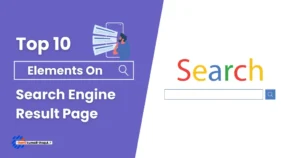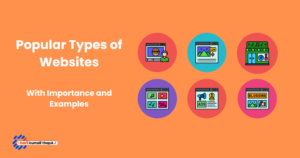SEO refers to Search Engine Optimization, is a process of improving a website’s overall site structure, performance, navigation, and content to increase its visibility in Search Engines like Google, Bing, Yandex, Yahoo, and more.
Search engines use bots, also known as crawlers or spiders, to scan and index your website. These bots collect data from your site, which algorithms analyze to determine rankings based on content, authority, and ranking factors.
3 main components of search engine optimization
- On-Page SEO
- Off-Page SEO
- Technical SEO
On-Page SEO

On-page optimization creates valuable, relevant, engaging content that satisfies user intent and addresses their queries (keywords).
Everything done within your website to improve your Search Engine Ranking visibility is called On-Page Optimization. Learning SEO from Onpage is recommended to beginners as you will have full control over everything you do.
Most people might think it is a one-time task, but you must continue to improve content through keyword research and updates to ensure its highest quality.
The SEO On-Page handbook passed down by our SEO gurus suggests the following optimization methods, which you, as a Beginner, should follow for the best results.
- High-Quality Content: Create engaging content that satisfies user intent, which you’ve ranked for (e.g., if a visitor visits your site/article, he should not need to search again for the same query.
- Keyword Optimization: Placing your targeted keywords in titles, headings, meta tags, and throughout the content can improve your visibility for their search queries.
- Meta Tags: Write meta titles and descriptions with your targeted keywords for the SERP to increase your click-through rate. (Note: SERP might ignore your custom Meta tags and take it from your article)
- URL: Use your targeted keyword in the Permalink.
- Headings: Use your keywords in H1, H2, and H3 naturally and in order, as Search Engines use algorithms.
- Image Optimization: Images can also bring you lots of traffic. All you need to do is use original images and provide descriptive filenames, alt tags, and captions to improve accessibility and visibility.
- Internal Linking: Logically connect your relevant pages to distribute link equity throughout the website.
- User Experience (UX): Improve your overall user experience through navigation, reducing bounce rates. (Note: Improve everything that annoys your users)
- Content Formatting: Use proper formatting techniques like lists, bold/italic text, and quotes to make content scannable and easy to digest for users and search engines.
Off-Page SEO

Off-page SEO refers to optimization activities outside your website to improve its visibility, authority, and reputation.
In this section of SEO, we try to create awareness of our website’s existence using different methods such as social media, brand mentions from popular websites, adding sites to Google Maps for local, and more.
- Link Building: Getting high-quality backlinks from high authority and relevant websites. (Eg: Getting links from CNN has more quality than receiving them from 100 unknown and spammy websites)
- Social Media: Active engagement on social media can increase your brand visibility and indirectly boost your visibility in the Search Engine. Sharing your website’s articles can increase traffic and social signals.
- Brand Mentions: When a reputable and authoritative website mentions your website it can indirectly contribute to your website’s authority.
- Guest Blogging: One of the most used techniques to get backlinks from high authority and relevant websites. Offering high-quality guest posts within your industry can help build your brand’s reputation earning you a link.
- Local SEO: Optimizing your website for local search by creating and maintaining a presence on local business directories, review platforms, and Google My Business can improve your visibility in local search results and attract customers in your geographical area.
Technical SEO
Technical SEO involves optimizing your website’s technical aspects to improve its visibility and accessibility to search engines. This will help Search engine crawlers effectively crawl, index, and understand a website’s content.
Many free and premium SEO tools will help check the site’s crawlability.
- Website Crawlability: What’s the use of a search engine if it cannot crawl your website? They need to crawl to understand your website to rank it. Issues such as broken links, crawl errors, or inaccessible pages prevent them from being indexed.
- Page Speed: Finally improve your website speed, you can do it so by optimizing images, and minifying CSS and JavaScript. (You can check your site speed via PageSpeed Insights.
- SSL Certificate: HTTPs encrypt data and secure browsing experience, also the use of HTTPs is considered a ranking factor in Google.
- Canonicalization: Fixing duplicate content issues by specifying the preferred version of a page. helps prevent issues with duplicate content penalties and ensures that search engines index the correct version of your content.
- Mobile Responsiveness: Make your website available on Mobile Phones. (Note: As of February 2024, mobile devices contribute to 61.21% of all website traffic.)
- Sitemap: It ensures all important pages are crawled and indexed properly. Creating and submitting a sitemap to a search engine will help them find and index your website pages more efficiently.
- Schema Markup: Implementing structured data markup to provide search engines with additional context about the content on the page, which can enhance visibility in rich snippets and featured snippets.
Conclusion
Search Engine Optimization is what you do within your page (On-Page). You, as a webmaster, have all the control, from optimizing your site URL to writing content. On the other hand, Off-Page is something you have very little control over because you are totally dependent on others to either provide you with backlinks or shares on social media.
Finally, technical SEO is optimizing your website to load error-free; when a user visits your webpage, they should be able to navigate without any trouble viewing, scrolling and more.
Even though SEO is divided into these, they have an inner section that goes deep down.
Stay tuned for more information on SEO for Nepalese, as we aim to simplify it for beginners.





